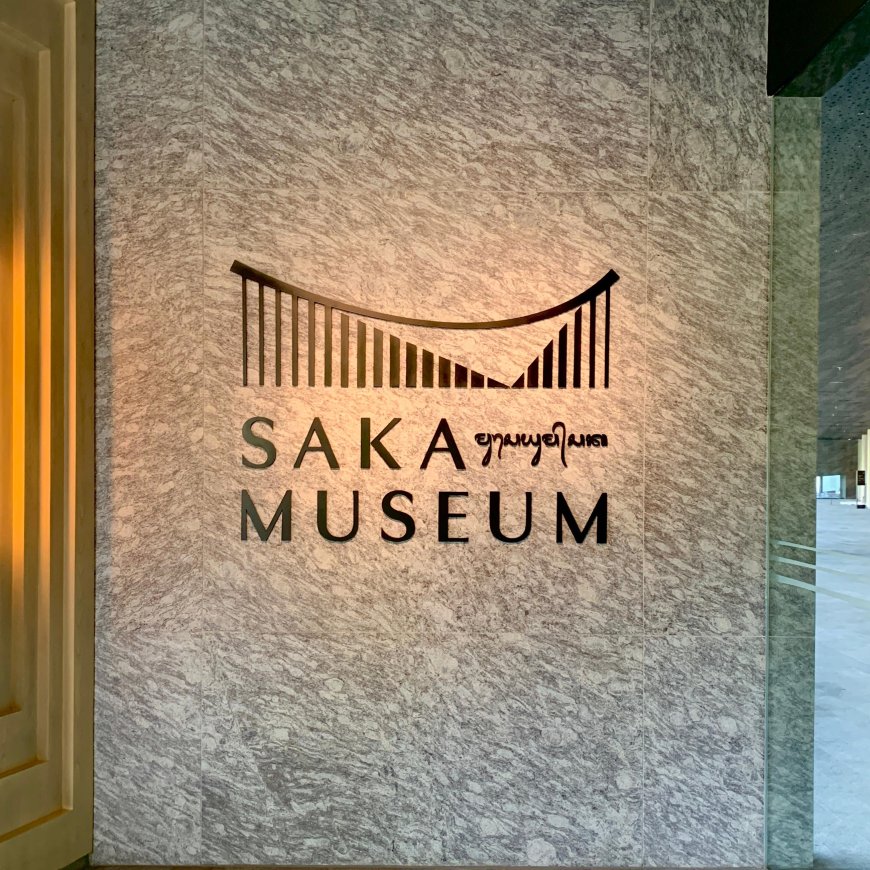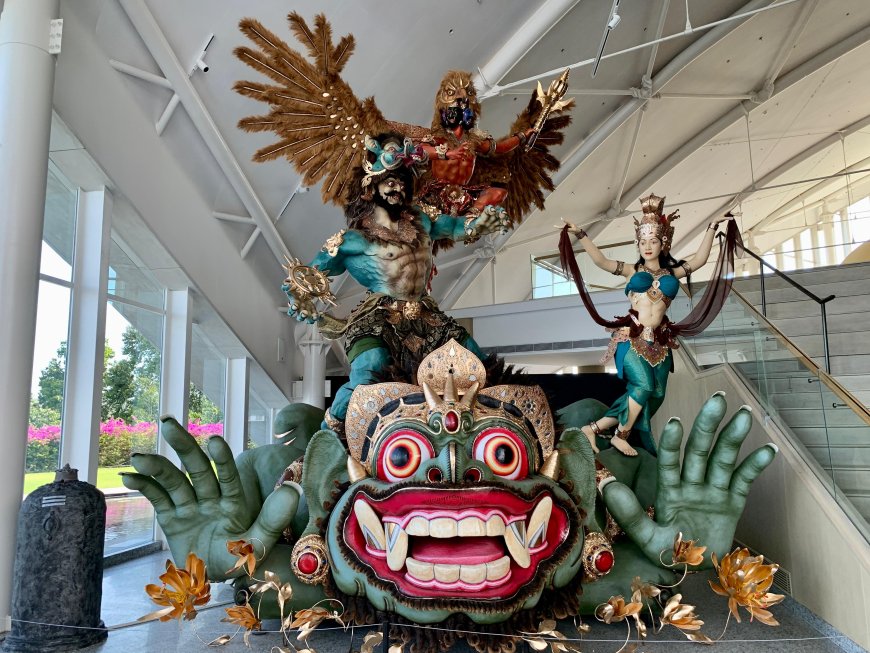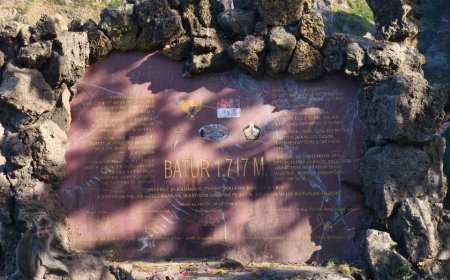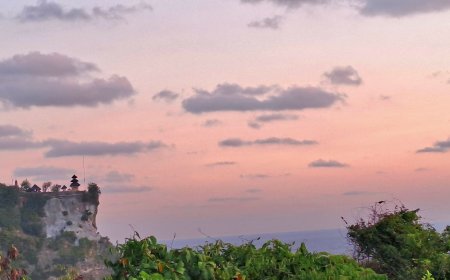Saka Museum: Sowing Bali's Cultural Heritage on the World Stage Through Innovation and Collaboration
Located at AYANA Bali, Saka Museum stands as a living monument to the rich culture of Bali, offering a comprehensive cultural experience. Named after the Balinese Saka calendar, the museum serves as a bridge between Bali's past and future, connecting its rich traditions with visitors from around the globe. Each exhibition showcases the depth of history, spiritual teachings, and authentic Balinese art, focusing on cultural preservation and education.

Built on the philosophy of Tri Hita Karana, which signifies harmony among God, nature, and humanity, this principle is not only foundational to Balinese society but is also woven into the fabric of the museum, inviting visitors to experience how these values of harmony and balance manifest in daily life. This philosophy is evident in how the Balinese live, create, and celebrate their existence. Through various exhibitions and educational programs, the museum encourages every visitor to appreciate the beauty of a balanced and peaceful life.

Interactive Projection Screen (Source: Author's Collection)
Saka Museum offers special exhibitions that delve into Nyepi Day, a day of silence celebrated by Hindus in Bali. On Nyepi, all activities cease entirely, creating a sacred stillness. Streets empty, and airports close, allowing the Balinese community to introspect and align themselves with nature. At Saka Museum, visitors can understand the profound significance behind this silence through visual installations depicting rituals such as Melasti, a purification procession to the sea, and Pengerupukan, a parade featuring ogoh-ogoh—giant statues representing evil spirits that must be expelled before Nyepi.

Amuk Rahwana lan Wilmana (Source: Author's Collection)
The museum displays an impressive collection of ogoh-ogoh, including a large piece titled Amuk Rahwana lan Wilmana, which depicts the epic figure of Rahwana. Ogoh-ogoh illustrates the story of King Rahwana, the main antagonist in the Ramayana epic. As a powerful and intelligent demon king, Rahwana is known for his mighty voice and devotion to Lord Siwa. His flying chariot, Wilmana, is a formidable weapon used in his battle against Prince Rama. Despite his power and resources, King Rahwana is ultimately defeated by Prince Rama, who embodies goodness and justice. This tale serves as a reminder that good will always triumph over evil, even in the darkest times.

Bhoma Narakasura (Source: Author's Collection)
Also featured is the towering ogoh-ogoh of Bhoma Narakasura. Bhoma Narakasura is a figure in Hindu mythology often associated with destructive power and a disruptive presence. In the context of Balinese culture, Bhoma Narakasura symbolizes the balance between creation and destruction. He is frequently depicted as a giant creature with a raging temperament, representing the wrath of Lord Siwa. The story of Bhoma Narakasura highlights the importance of balance in the universe, where his presence reminds us of the consequences of unbalanced actions between good and evil. In Balinese ogoh-ogoh tradition, Bhoma Narakasura is typically portrayed as one of the characters showcased in parades leading up to Nyepi, where these statues are paraded to expel and cleanse negative energy from the environment.

Goddess Saraswati (Source: Author's Collection)
Goddess Saraswati in Hindu cosmology embodies feminine strength complementing masculine power, encompassed in the Tridevi: Saraswati, Lakshmi, and Parwati. Saraswati symbolizes wisdom, knowledge, and creativity, bridging celestial wisdom with earthly beauty and giving voice to ideas in the cosmic horizon. Each ogoh-ogoh expresses impressive aesthetics, delivering a message about the struggle between good and evil. This exhibition portrays Nyepi celebration as more than just an annual ritual, but an integral part of Balinese life values that teach balance and harmony.

Balinese Lontar (Source: Author's Collection)
Beyond Nyepi celebrations, Saka Museum showcases the heritage of Balinese lontar, ancient manuscripts written on palm leaves. Lontar serve not only as communication and documentation tools but also preserve sacred knowledge passed down through generations. Each lontar is inscribed using a special iron stylus and contains various teachings encompassing spiritual knowledge, traditional healing, and classical literature. Saka Museum presents its lontar collection with an engaging artistic arrangement, allowing every visitor to appreciate the beauty of calligraphy and the depth of its contents.

SAKA Knowledge Center (Source: Author's Collection)
The museum also features a knowledge center called SAKA Knowledge Center, with a collection of over 490 lontar manuscripts and literary works. In the exhibition "Threads of Bali," visitors are presented with a cultural narrative rich in philosophical teachings and noble values. Through this exhibition, the museum endeavors to illustrate how the Balinese maintain their cultural identity amid modernization.

Palelintangan (Source: Author's Collection)
Saka Museum also highlights the wisdom of the traditional Balinese calendar, or Palelintangan, a calendar that combines the seven-day week (Saptawara) with the five-day week (Pancawara). This calendar is utilized by the Balinese to determine auspicious days that guide their daily activities, from customary practices to agriculture. Palelintangan demonstrates that the concept of time in Bali is not merely linear but intricately linked to the cycles of the universe's life. Through the Saka calendar, the museum showcases to visitors how the concept of time in Balinese culture serves as a spiritual guide. This exhibition encourages everyone to better understand how the Balinese value time as a manifestation of harmony with nature. The museum also hosts discussion programs and seminars to teach the importance of harmony with nature and spirituality.

Reading Space (Source: Author's Collection)
At Saka Knowledge Center, the impressive collection of lontar and books is not only a major attraction. There is also a comfortable area for enjoying and inspiring, with ample seating surrounded by a warm atmosphere, creating the ideal environment for reading. This place provides an unforgettable learning experience, making every moment with the writings more meaningful and memorable.
Saka Museum is managed by a competent and experienced team, with Dr. Judith E. Bosnak as the director, Marlowe Bandem as Executive Advisor, and Prof. I Made Bandem on the Advisory Board. With a profound understanding of Balinese culture, they are committed to making Saka Museum a globally recognized knowledge center. Their leadership has successfully presented various innovative and informative exhibitions, introducing Bali to the world in an engaging and educational manner.
The modern technology used at Saka Museum enhances the interactive experience, allowing visitors to connect more deeply with Balinese culture. These technological facilities not only enrich visitors' understanding but also provide a unique and lasting experience during every visit.
Saka Museum is not just a museum but a celebration of culture inviting visitors to feel the essence of Balinese life. Through in-depth exhibitions and modern visual presentations, this museum serves as a place where Bali's cultural heritage is sown and introduced to the world. Every corner of this museum radiates the cultural richness inspired by the philosophy of Tri Hita Karana, making it more than just a tourist attraction, but an enchanting and inspiring experience.
This museum not only preserves artifacts and ancient manuscripts but also breathes life into the cultural values embedded within them. Visitors can directly experience the beauty of art and the depth of spiritual teachings found in Balinese traditions. Saka Museum is a place where every visitor is invited to know and feel life from a cultural perspective that upholds harmony.
With bold vision and continuous innovation, Saka Museum continues to achieve recognition as a cultural destination that enriches our understanding of Bali. Through this unique experience, the museum provides space for everyone to reflect on the values of a balanced, harmonious, and peaceful life, making this visit more than just a tourist journey but a profound and inspiring experience.
Saka Museum is open daily from 10:00 AM to 6:00 PM, with an entrance fee of IDR 120,000 for adults and IDR 60,000 for children. For more information, you can visit the SAKA Museum website at sakamuseum.org.
































































